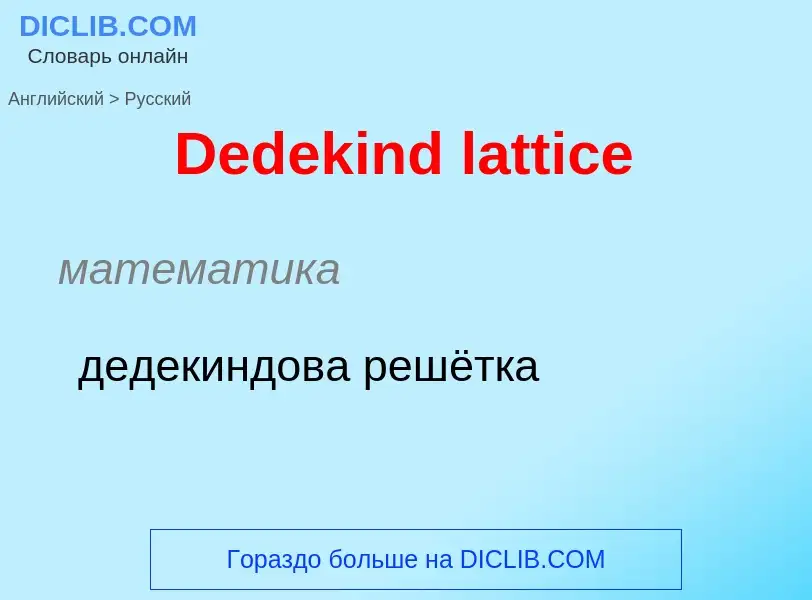Vertaling en analyse van woorden door kunstmatige intelligentie ChatGPT
Op deze pagina kunt u een gedetailleerde analyse krijgen van een woord of zin, geproduceerd met behulp van de beste kunstmatige intelligentietechnologie tot nu toe:
- hoe het woord wordt gebruikt
- gebruiksfrequentie
- het wordt vaker gebruikt in mondelinge of schriftelijke toespraken
- opties voor woordvertaling
- Gebruiksvoorbeelden (meerdere zinnen met vertaling)
- etymologie
Dedekind lattice - vertaling naar russisch
математика
дедекиндова решётка
математика
закон модулярности
математика
структура дедекиндова
Definitie
Wikipedia
In the branch of mathematics called order theory, a modular lattice is a lattice that satisfies the following self-dual condition,
- Modular law
- a ≤ b implies a ∨ (x ∧ b) = (a ∨ x) ∧ b
where x, a, b are arbitrary elements in the lattice, ≤ is the partial order, and ∨ and ∧ (called join and meet respectively) are the operations of the lattice. This phrasing emphasizes an interpretation in terms of projection onto the sublattice [a, b], a fact known as the diamond isomorphism theorem. An alternative but equivalent condition stated as an equation (see below) emphasizes that modular lattices form a variety in the sense of universal algebra.
Modular lattices arise naturally in algebra and in many other areas of mathematics. In these scenarios, modularity is an abstraction of the 2nd Isomorphism Theorem. For example, the subspaces of a vector space (and more generally the submodules of a module over a ring) form a modular lattice.
In a not necessarily modular lattice, there may still be elements b for which the modular law holds in connection with arbitrary elements x and a (for a ≤ b). Such an element is called a modular element. Even more generally, the modular law may hold for any a and a fixed pair (x, b). Such a pair is called a modular pair, and there are various generalizations of modularity related to this notion and to semimodularity.
Modular lattices are sometimes called Dedekind lattices after Richard Dedekind, who discovered the modular identity in several motivating examples.

.gif?width=200)
